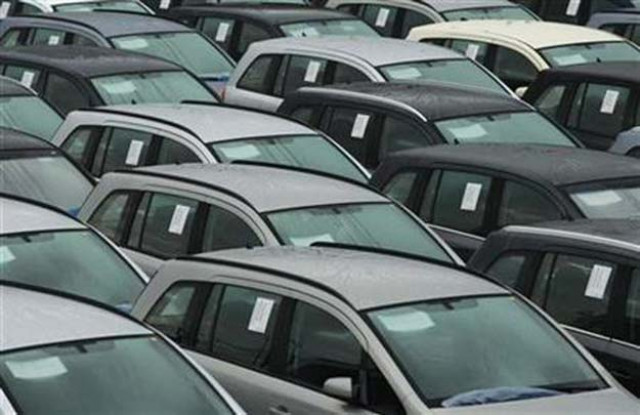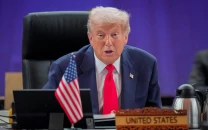The flat-tire in Pakistan’s automobile sector
The country has repeatedly been unable to negotiate better terms with automakers for exports from the local industry

Once knocked down by nationalisation, the automotive tapestry of Pakistan grew vibrantly in the first decade of the 21st century. Although the picture may seem far from colourful today. At the time of independence, the automotive sector in Pakistan differed immensely from the one we see today.
The cars on the roads were either British or American and used primarily by the elite. The models imported into the country from 1947 to the late 1960s included Ford, Chevrolet, Mercedes, Morris and Volkswagen. These companies even had their own branches in the bigger cities of the Sub-Continent, including in Karachi, Bombay (present-day Mumbai) and Dhaka.
By the mid-1950s, European models also made their way to this part of the world and in the ‘60s, some of the bigger importers of the country established their own assembly plants with American-branded Ford trucks being assembled here. “Trucks were the first vehicles to see innovation and diversification, and they gained popularity as well,” said Auto Expert, Mashood Ali Khan while speaking to the Express Tribune.
“This was also the time during which local part manufacturers, also called second-tier and third-tier vendors, began to sprout. By the late 1960s, the country had a network of parts manufacturers, or small and medium sized enterprises (SMEs), in the auto sector. However, in the late 60s, economic policies, a combination of colonial legacies and Mahbubul Haq’s functional inequality theory, brought inequality to both wings of Pakistan, resulting in reduced industrial sector growth,” he explained. “After the political change of 1971, the nationalisation policy introduced by Zulfikar Ali Bhutto lay the foundation of socialist economic policy and reforms were introduced to stimulate growth. This proved to be another shock for industrialists and investors, although the policy was a popular trend in many countries of that time,” Khan added.
“Many left the country in dismay and there was a break in the growth trajectory that started from the 1950s. The automotive sector was also affected by this failed experiment of nationalisation and the business community.
developed a deep suspicion of the government,” he further noted. “From 1980 onwards, the government shifted its focus towards back to the auto sector again. This time, the first entrants in the market were Japanese companies. Suzuki was the first to set up an assembly plant in Pakistan. Toyota entered Pakistan as the market expanded in the early 1990s and Honda came in in the mid-1990s. This marked the beginning of the era of Japanese motors,” Khan explained. “The entry of Japanese automakers provided a fresh opportunity to local part manufacturers; however, Pakistan could not negotiate better terms, owing to its recent history of nationalisation that had shaken the confidence of national and international investors,” he expounded.
“Desperate to resume industrial activity, Pakistan could only ask them to come on their own terms and conditions. Ideally, the government should have brought in the foreign companies with a long-term plan in mind, where the companies would be bound not only to initiate localisation of auto parts but also to export some models from here. Pakistan could have also asked for terms where Japanese investors would incorporate Pakistani part manufacturers in their supply chains. Rather than long term planning, however, our focus was to lure them into the Pakistani market, although it was a big achievement to persuade them to do so,” Khan pointed out. “During the same time, the government introduced a personal baggage and gift scheme for overseas Pakistanis, whereby they could come back with a car when they returned to Pakistan. Although this was a good scheme, it was misused by traders. They started trading those vehicles, hurting local manufacturing as hundreds of thousands of vehicles were imported. This disrupted demand and supply for local manufacturers, resulting in sluggish local auto market growth,” he explained.
From 1999 to 2000, the Pakistani car industry volume stood at 35,000. Motorcycle production in the same period was 86,000 while the production of trucks and buses stood at 913 and 1,460 respectively. “There was no Sports Utility Vehicle (SUV) culture during this period,” Khan underlined. “From the year 2000 onwards, Korean automakers entered into Pakistan’s automotive market, bringing new models and new options to customers of passenger vehicles and commercial trucks. They were warmly greeted,” he noted. “In the mid-2000s, Pakistan introduced its first auto policy for twowheelers, in which the government issued around 60 licences to motorcycle manufacturers.
This was a development that was going to help the masses who were deprived of a mass transport system, especially in the port city of Karachi. This was also the time when Chinese companies entered the market as the bike producers were from China,” Khan stated.
“In 1999, around 2,000 motorcycles were manufactured. This marked the beginning the car industry witnessing a boom. The country produced approximately 170,000 cars in 2005-6. During this time the economy was flourishing, as was the automotive market,” he added. “In the mid-2000s, motorcycle volumes touched the 500,000 mark. Companies were reinvesting as the market was booming at the time.
This boom was also driven, in part, because of civil-military aid from the US, which was flowing into the country as Pakistan was a non-NATO ally in the War on Terror. Interest rates were in the single digits (5.6%), thereby encouraging auto financing and further fuelling the boom,” Khan expounded.
However, at the time demand was skyrocketing but the government allowed the import of three- to five-year-old used cars. This eventually led to the downsizing of the car industry. “In the late 2000s, passenger car volumes dropped almost 50%, due to the import of used vehicles being allowed by the government. In the mid2000s, the deletion plan was discontinued. It was replaced by a tariff-based system,” he explained. “The deletion program was forcing companies to replace imported auto parts with locally manufactured ones to reduce dependency on imports. The tariff-based system allowed the automakers to import whatever was required by paying tariff.
This was immediate revenue to the national kitty but in the long-term, it eroded incentives for the automakers to localise parts,” Khan elaborated. “In 2004, Pakistan signed the World Trade Organisation (WTO) pact under which the country was bound to open imports on a tariff-based system,” said the Former chairman of Pakistan Association of Automotive Parts and Accessories Manufacturers (PAAPAM), Abdul Rehman Aizaz, adding that the treaty may have had positive outcomes in other sectors but resulted in disinterest in the localisation of auto parts, as the companies could easily import from their base countries. “Under the deletion programme, companies were bound to replace some percentage of their auto parts but then it became their own discretion,” he explained.
There were also technological barriers as Japanese companies do not directly transfer technology to Pakistan, given the low volumes. “Motorcycles and tractors have been localised as they have volumes in millions,” noted Aizaz. “The government gave an auto industry development plan from 2000 to 2012. This policy included the development of testing centres, technology upgradation for auto parts and many other important things but these were not implemented because no one followed the timeline of the policy,” Khan lamented, adding that the policy missed the core elements of raw material manufacturing and export enhancement by giving incentives to the private sector.
“The auto policy for the period 2016-2021 tried to encourage new entrants with incentives of brownfield and greenfield. Chinese and Korean companies entered the Pakistani market. However, once again, the country could not secure better terms and conditions, such as export of any one of their models in the future and the setting up of research and development offices in Pakistan,” he added.
In March 2022, Peugeot, a European car company, announced kick-starting the manufacture of its cars in Pakistan in partnership with Lucky Motor Corporation (LMC). LMC came into existence as a result of the government’s Auto Industrial Development Policy 2016-21. Speaking to the Express Tribune, LMC Chief Executive Officer, Asif Rizvi, dubbed the policy ‘successful’ saying it offered concessions to new brands and products and created a level play ing field between the existing and new market players. As a result of the initiative, 12 new car manufacturers entered Pakistan, lifting the total number of vehicle makers to 15. The policy also aided in the introduction of 25 new vehicles in the country.
The company also ventured into auto part manufacturing in partnership with other vehicle manufacturers and established a manufacturing facility to produce seats, wire harnesses, air-conditioners and injection moulding parts for the automobile plant. It also entered into eight technical assistance agreements with four Korean autopart suppliers for the transfer of technology to Pakistan.
At present, however, all cars assembled in the country come from Japanese, Korean or Chinese assemblers. “At present, we have an auto policy for the period 2021-2026, which is aimed at enhancing auto exports. The target is ambitious but the good thing is that for the first time, the country has targeted making the engineering sector export-oriented. The government has also committed to improving the production from auto parts makers to stimulate exports,” Khan said.
In the next policy, the government needs to persuade the producers of steel and plastic sheets-core raw material for the auto industry to set up plants in Pakistan. Pakistan imports $6 billion of different kinds of plastics. And the most important of all is to invest in human resources. Some 60% of the 214 million population consists of youth.
This much celebrated fact will, in the future, become a burden on the country if these young people are not trained and equipped with market-based skills. Recently, only Changan Master Motors have plans to export but Khan contends that other players would also follow its lead, as they have 40 years of market experience. “Auto industry issue is not a micro but rather macro economics subject,” noted Aizaz. “SMEs of auto parts are exporting on their own but we cannot attain the required volumes until original equipment manufacturers (OEMs) also start exporting.
As the main auto companies, OEMS have an established supply chain and deal in significant volumes,” he added. “However, at present, the auto sector is in the ICU due to restrictions on raw materials from the government. Therefore, we can only talk about survival for now,” Aizaz remarked.


























COMMENTS
Comments are moderated and generally will be posted if they are on-topic and not abusive.
For more information, please see our Comments FAQ